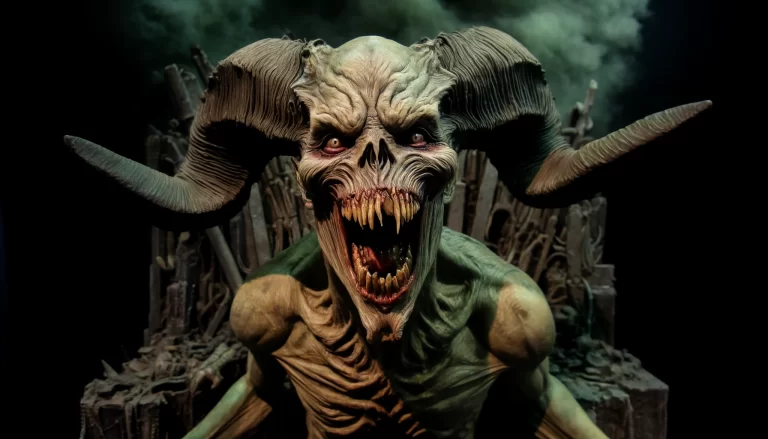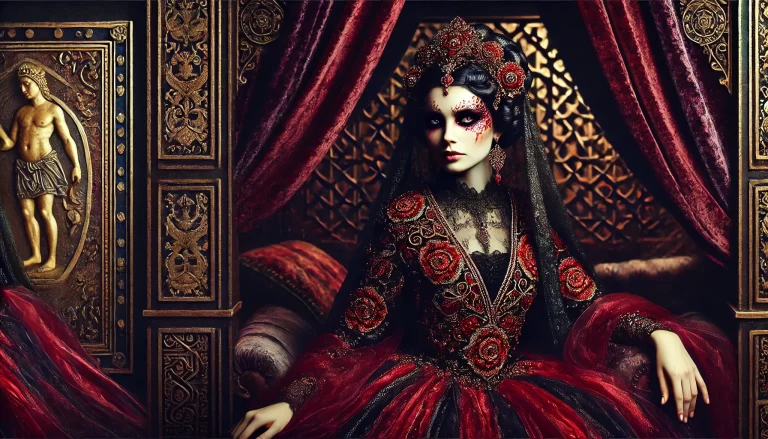Belphegor
The demon Belphegor is one of the most intriguing and mysterious figures in the annals of mythology and demonology. Rooted in ancient lore, this entity has been a subject of fascination and fear across various cultures.

Historical and Mythological Origins
Belphegor’s origins are ancient and multifaceted, blending elements from different mythologies and religions. Historically, Belphegor is believed to be adapted from Baal-Peor, a Moabite god associated with licentiousness and orgiastic rites. In the Hebrew Bible, this deity is mentioned in connection with the Israelites falling into idolatry through the temptations of Moabite women.
In later Jewish and Christian demonology, Belphegor was transformed into a demon. His name and characteristics evolved, especially during the medieval period, when demonology became a significant aspect of theological studies. According to some accounts, Belphegor was one of the seven princes of Hell, representing Sloth and the seduction of invention.
Characteristics and Depictions
He is often portrayed dually: as a beautiful young woman or as a monstrous, bearded demon with horns and sharply pointed nails. This dichotomy symbolizes the two sides of the temptations he represents — allure and repulsion.
Physical Appearance
- In his demonic form, Belphegor is depicted as a grotesque figure. He has horns, and a gaping mouth, and is often shown sitting on a toilet or a throne of waste, reflecting his association with the baser human instincts.
- In his seductive form, he appears as a beautiful woman, embodying the enticements that lead people into sinful behaviors.

Powers and Abilities
Belphegor is believed to have the power to inspire great creativity and invention — but with a catch. He offers these gifts to people to seduce them into laziness, and overindulgence, and ultimately to worship him. His other powers include:
- Insight into the past and future, particularly regarding technological and innovative developments.
- The ability to sow discord and confusion among people, leading them away from wisdom and into folly.
Cultural Impact and Representation
In Literature and Media
Belphegor has made appearances in various forms of literature and media over the centuries. In Dante Alighieri’s Divine Comedy, Belphegor is one of the demons of Hell. In modern times, he is featured in numerous fantasy novels, video games, and television series, often embodying themes of temptation and innovation gone awry.
Symbolic Meanings
Belphegor’s presence in cultural narratives often symbolizes the dangers of unchecked innovation and the seductive nature of easy solutions. He is a reminder that every invention or creative leap, while potentially beneficial, carries potential risks and ethical dilemmas.
Encounters and Stories
One of the most famous legends involving Belphegor is the tale of his mission to Earth. According to the lore, Belphegor was sent to Earth by Satan to find out if there was such a thing as married happiness. Unable to find any, he returned to Hell, convinced that the concept was a myth. This story highlights the cynical view of Belphegor towards human happiness and relationships.
Belphegor in Modern Occultism
In contemporary occult practices, Belphegor is often invoked in rituals related to wealth and invention. Practitioners believe that working with Belphegor can lead to great personal wealth or groundbreaking inventive ideas. However, they also warn that such dealings require careful negotiation and protection, as Belphegor’s gifts can lead to ruin as easily as success.
Conclusion
Belphegor remains a potent symbol of the lure of innovation balanced against the perils of temptation and moral decay. His story encourages a deeper reflection on the double-edged nature of progress and the human susceptibility to seduction in various forms. As we continue to explore the complexities of this enigmatic figure, he will undoubtedly continue to inspire and caution humanity in equal measure.